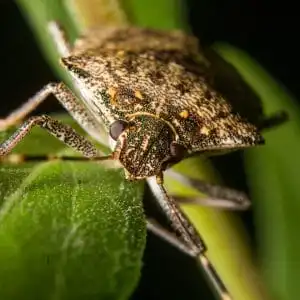Colorful leaves, football, and relief from summer heat makes fall a favorite season for many. The cooler weather means more time spent indoors to stay cozy and warm. Unfortunately, other creatures want a warm place to spend winter and you’re home could be their next destination. Here are five fall pests that often end up as uninvited guests.
Bees, Wasps & Other Stinging Things
By late September into early October, wasp and bee queens set out to find shelter for the colder months. Logs and hollowed trees are prime real estate, but they also find ways into attics, sheds, garages, and underneath roof eaves. Be extremely careful removing any nests you find. Better yet, call in an expert.
Ants
Ants head indoors as the weather turns cooler in search of food and shelter. Carpenter, pavement, and odorous house ants are the usual suspects that can set up colonies in walls, crawl spaces, and crevices. While carpenter ants are capable of damaging a home’s structure, other ants get into our food and become a nuisance. Once these colonizing creatures get inside, they are hard to get rid of unless you locate the nest.
Stink Bugs
The smelliest of the fall pests, stink bugs set up shop inside homes and other structures once the weather turns cooler. If stink bugs enjoyed the warmth and comfort of your home last winter, chances are they left an invisible chemical trail to lead their rancid relatives to your home.
Spiders
For the most part, spiders are harmless and help keep the pest population down. They eat many common household pests, including disease carrying insects like mosquitoes, cockroaches, and flies. Still, these creepy creatures are not a welcome site in homes, especially the venomous ones. All spiders can bite if provoked or in self defense, but only a few are dangerous.
Rodents
Not all pests are insects. Mice, rats, and other rodents like warm sheltered places in the winter, too. In houses, they like walls, closets, crawl spaces, and attics. They’ll even make nests in attic insulation. Rodents have a reputation for getting into food containers. But these pests are also dangerous because they chew through wires, carry diseases, and often bring along other pests such as mites and ticks. How can you tell if you have a rodent problem? Gnaw marks on wood, wires, and walls, as well as droppings on floors and other surfaces.
How to Keep Fall Pests Outside
- Caulk or seal up cracks and crevices around foundations, doors, and windows, plus near piping and wiring.
- Store food in airtight containers, wipe off counters and tables, and vacuum regularly to remove any crumbs.
- Fix moisture problems like leaky pipes and use dehumidifiers in damp basements.
- Place screens on chimney openings and vents.
- Repair damaged window screens.
- Dispose of trash and recycling in sealed receptacles.
- Replace loose weather stripping around doors and windows.
- Outside, make sure plants, bushes, and branches don’t come in contact with siding, foundations, or roofs. Better yet, create a foot-wide gravel or stone border around your home.
- Keep stacks of firewood away from the house and only bring in logs as needed.
- Get rid of clutter indoors and out, where pests can hide and call home.
We hope these tips help keep fall pests from becoming unwanted guests in your home. If you suspect a pest infestation in your home or wish to take preventative measures, contact Free Spray Lawn Care at 419-529-5296 and we’ll help you stay pest-free all year round.



Comments (0)
Thanks for your comment!
Thanks for your feedback! Your comments have been successfully submitted! Please note, all comments require admin approval prior to display.
Error submitting comment!
There is a problem with your comment, please see below and try again.